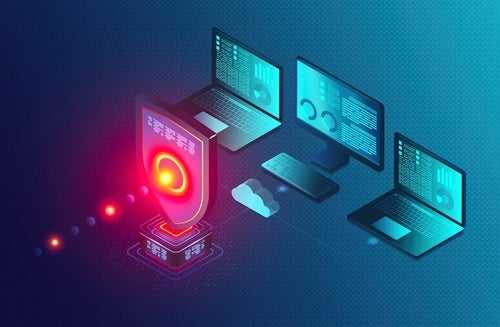Front office software has never been more important. Clients are demanding 24/7 service and broader range of data and functions. Advisors meanwhile are under pressure to add value and to be more ‘productive’ in terms of client retention and acquisition. The ability of technology to respond to the needs of both sides is key. Alison Ebbage reports.
Essentially front office software should help the advisor to support the client – from prospecting to onboarding right through to ongoing maintenance and retention. In today’s environment where client acquisition and retention are hard-fought, it is no surprise that wealth managers are making heavy investments in their front office capabilities.
Alexander Camargo, analyst at Celent, comments: "There is so much pressure for the front office to retain clients and acquire new ones. Anything that can help in this quest will be jumped on instantly. In addition there are lots of regulatory changes that are adding weight to the IT spend so again, anything that makes life easier and more cost effective is welcome."
He defines the front office suite as something that can be used by both advisor and end client. Essentially the aim for the advisor is to service the client via onboarding, KYC and suitability assessment, portfolio management, long – term financial and lifestyle planning and more recently, ad-hoc reporting.
For the client meanwhile the trend is to add a capability to self serve. Although not all clients will need or want this service, the demand from a globally-mobile younger generation has very much been to up the ante in terms of functionality, channels and a general demand to be able to access their holdings and access data 24/7.
La Caixa Bank has recently upgraded its front-end across the retail and wealth management segments. The aim is to make life easier for customers, as well as to improve aspects such as security.
How well do you really know your competitors?
Access the most comprehensive Company Profiles on the market, powered by GlobalData. Save hours of research. Gain competitive edge.

Thank you!
Your download email will arrive shortly
Not ready to buy yet? Download a free sample
We are confident about the unique quality of our Company Profiles. However, we want you to make the most beneficial decision for your business, so we offer a free sample that you can download by submitting the below form
By GlobalDataThe bank’s ‘my manager’ front-end allows for a self planner and ipad app plus a better range of data and research. The client should be able to go online, fact find, set profiles and assess risk attitude, portfolio goals, affordability, scenario planning and the like. The website is also customizable and allows clients not only to interact with advisors via video calls and interactive chats but also to e-sign documents.
Benjamí Puigdevall, head of electronic channels at La Caixa, comments: "We see this very much as a relationship enhancer. A decent front end system should empower clients. It is not about leaving them to their own devices. It effectively raises the bar in terms of the quality of the advice since the client can effectively cross check what the advisor is saying."
Joe Norburn, managing director, head of digital & front office solutions at Coutts, comments: "Some clients are very happy to self-serve, some prefer to speak with their advisor, and some will do both. A successful strategy and approach needs to be based on offering a client choice, ensuring that all core interactions can be supported in whatever channel they prefer and that the experience within and across those channels are impactful, consistent and complementary. This is very much a client empowerment play and about adding value into the front-end."
Advisor
But if the client can effectively self serve and is increasingly autonomous then what is left for the advisor to do?
Plenty! The average relationship manager is under pressure to make the very best use of their time. A sophisticated front-end can mean that a relationship manager can still have lots of client contact, but that the contact is less time consuming – thus leaving them free to manage additional clients.
Pierre Bouquieaux, product director for the Temenos suite of wealth solutions comments: "It is key for the relationship manager to be as productive as possible. As a general rule they are having to deal with a greater number of customers and many of those actually have more information than the relationship manager when they call up. So it is important for the relationship manager to also be able to access information quickly and easily and thus be able to respond."
However, that is not to say that an excellent front-end equates to the client being able to do and see exactly the same as the relationship manager. Indeed, being able to build in permission that work according to segment or client profile is an important facet of the ‘availability’ ethos.
Norburn comments: "Successful organisations have expanded their approach to form insights and to personalise experiences based not only on data that they hold, but also on what’s available elsewhere." He continues: "There needs to be checks and balances. We must always use data in a compliant and sensitive fashion – both with regulation and with the permissions we have with a client."
And Camargo adds: "It is all about segmentation. Vendors need to have lots of universal functionality but they also need to have permissions and stops built in so that appropriate adjustments can be made."
Related to the permissions requirement is the role of regulation.
Bouquieaux explains: "As regulation has increased then so too have the checks and balances that the front-end systems need to have in place. Things that risk appetite, product suitability and the like all need to be assessed and a data trail is required."
Data ownership and residence is also important – particularly given the rise in mobile applications for mobile people. In this scenario it is important for both security and regulation that the actual data resides on the bank’s systems not the tablet or mobile.
Camargo comments: "Security is always a concern and the measures to combat data theft need to be done at enterprise level. In practical terms this means the data needs to be sat on the bank’s system. This throws up the issue of whether the data is owned by the bank or the client and what it can be used for. In geographical terms there are also issues over where the data resides if say a Swiss advisor meets a client in Luxembourg and uses a tablet to access data.
Norburn adds: "The dissolution of barriers and siloed systems means that a client journey, and the data that underpins it, can start in one place and end up somewhere completely different. It’s important to ensure that the data follows and adapts with that journey and that the journey across channels is seamless."
Issues like this almost certainly need further clarification so the debate can continue and allow for further progression. The current Holy Grail seems to be the advisor and the client interacting on the same screen but potentially in separate locations.
Camargo explains: "Interaction between the client and the advisor with both being able to use the same screen both together and remotely is a certain goal for wealth managers.The screen sharing would be done to create a proposal or a report, for example."
Another advantage to screen sharing is the ability to create secure social networks for ‘appropriate’ people to share ideas and exchange information.
But as Camargo points out, no matter what the functionality, it has to have a user friendly front end presentation and be intuitive to use. "What it is effectively doing is serving as a layer to access underlying data – be that on the client, the portfolio etc."
And Norburn adds: "The front-end is really important. Technology is more capable and powerful than ever before. With increased technology sophistication, it is more important than ever to ensure that the interface is highly personalised, intuitive and the design pixel perfect."
However as important as the front-end is what lies beneath in order to service the user interface is crucial. Going forward the trend is for the application of in-depth analytics to the data coming from the front end in order to be able to push back out to the end user a more targeted and relevant service.
Puigdevall comments: "NFC technology may well develop to allow for more in-depth analytics that gives an additional behavioural, social or geographic slant to the bank’s relationship with its clients."
Norburn believes that although the trend is to consolidate the number of vendors, the front -end is so important that it is ideal for adding additional best in class components to the bank’s core system in order to maintain an outstanding level of service and add value. "It is critical to have an IT architecture that is aligned with the business architecture and strategy. It must allow for more rapid and deeper integration of new components where that is required to meet a client or commercial need." Norburn adds: "Our system (Avaloq) is API based so we are able to add to it when we see fit."
Ultimately though, a super smart front-end can only ever be a relationship enabler and enhancer- it cannot replace the human element in an industry so inherently built on trust and rapport. Puigdevall comments: "In the private bank we think that over 60 per cent of clients use electronic channels, a reflection of a mobile lifestyle. In the private bank space it is not just about the ability to transact, it is the ability to manage the whole relationship and enhance it."
And Norburn adds: "We certainly seek to automate and make life easier for both the client and relationship manager but the core role for the relationship manager will never disappear." He adds: "Client craft and deep relationships are crucial; our advisors are central to this. Technology plays a key role, but it is often the supporting act."







